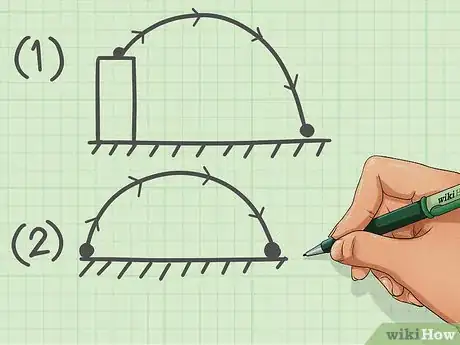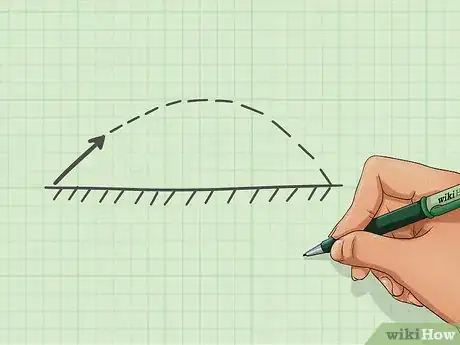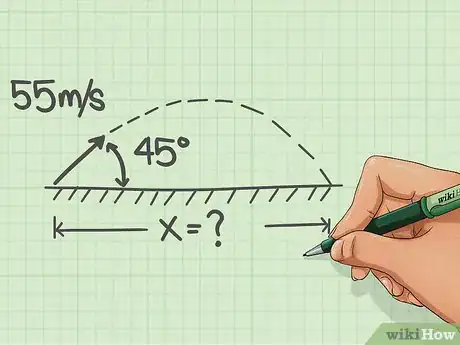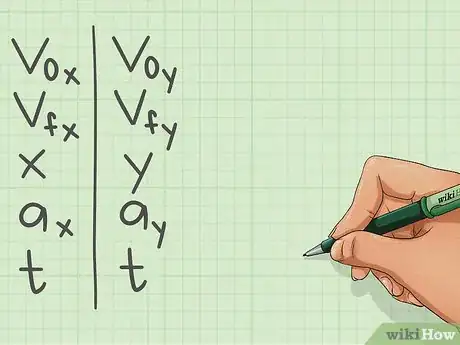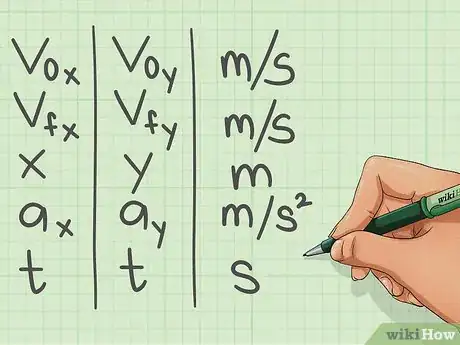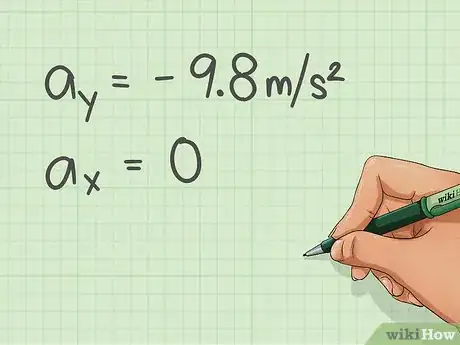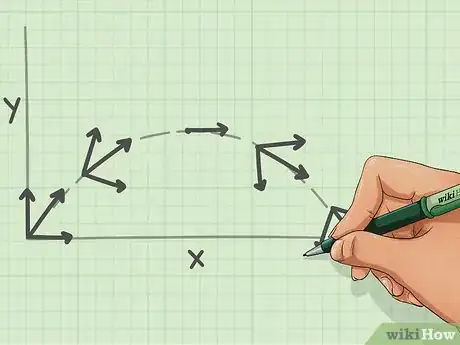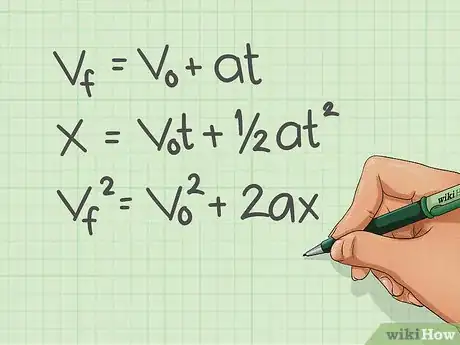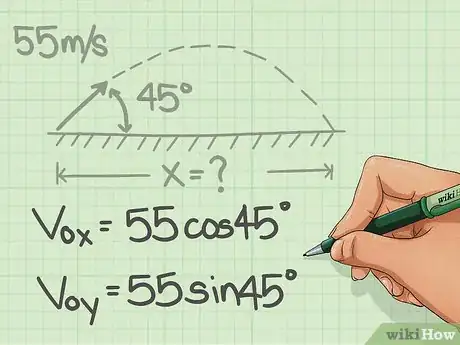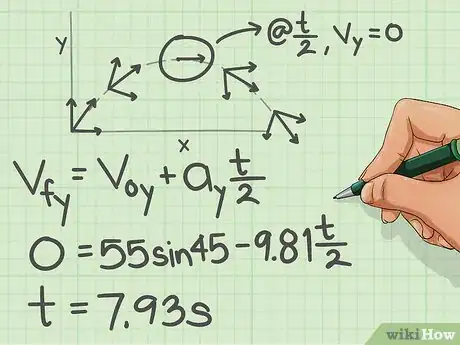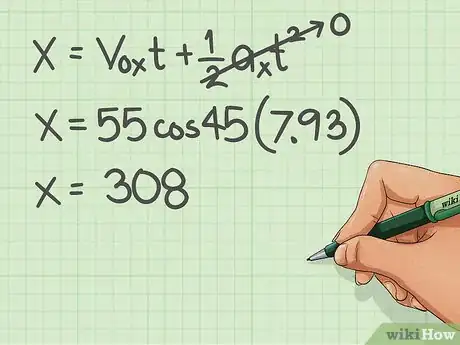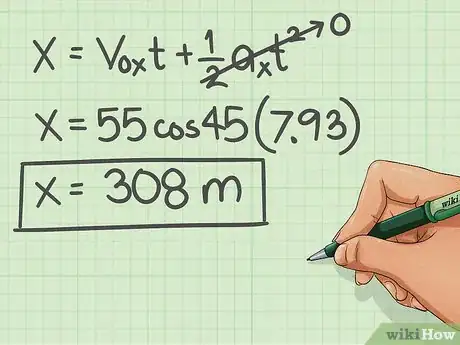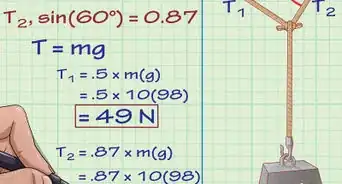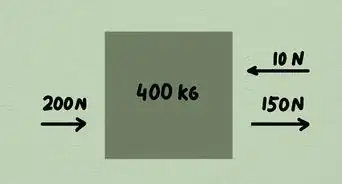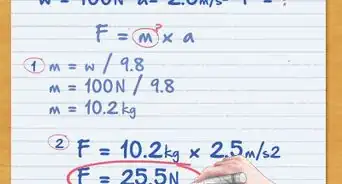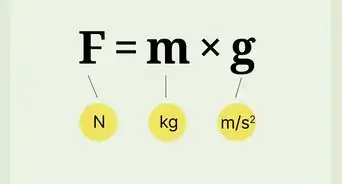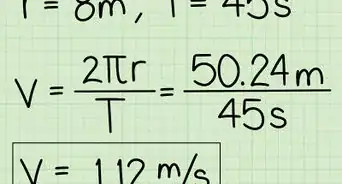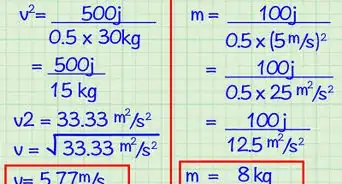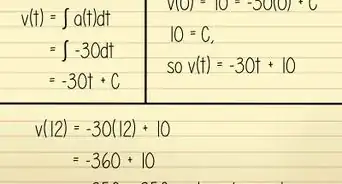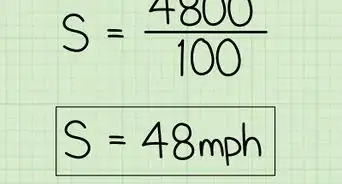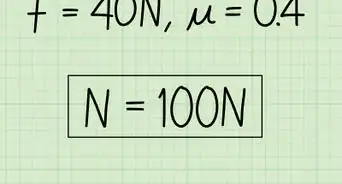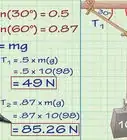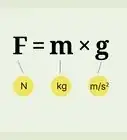X
wikiHow is a “wiki,” similar to Wikipedia, which means that many of our articles are co-written by multiple authors. To create this article, volunteer authors worked to edit and improve it over time.
This article has been viewed 60,395 times.
Learn more...
Projectile motion is often one of the most difficult topics to understand in physics classes. Most of the time, there is not a direct way to get the answer; you need to solve for a few other variables to get the answer you are looking for. This means in order to find the distance an object traveled, you might first have to find the time it took or the initial velocity first. Just follow these steps and you should be able to fly through projectile motion problems!
Steps
-
1Determine what type of problem it is. There are two types of projectile motion problems:
- (1) an object is thrown off a higher ground than what it will land on.
- (2) the object starts on the ground, soars through the air, and then lands on the ground some distance away from where it started.
-
2Draw a picture. Draw out the scenario so you can see how the object travels.Advertisement
-
3Label the distances and velocities given in the problem on your picture. You should be able to look at the picture and have a clear understanding of the path and values given in the problem.
-
4List all your variables. It may seem unnecessary if you have your picture properly labeled, but keeping all your variables together in a list will help show what you are missing. These variables should include your final velocity, initial velocity, distance, acceleration, and time. Since this is projectile motion problem, however, there are different values for the object in the x and y direction. This means you will need to make two lists. It is important to read the question carefully and label your values accordingly.
-
5Make sure the units match. Convert your units into meters and seconds so that you can use constants to solve the problem.
-
6Use physics constants to fill in some unknown variables. In the y direction, acceleration will always be -9.8m/s^2 since there is always acceleration due to gravity. The initial velocity in the y direction will always be 0 m/s as well. In the x component list, your initial and final velocities will be the same, since there is no new force acting on the object, meaning your acceleration will be 0 m/s^2.
-
7If your problem is set up like scenario (2), make sure to use the angle given to break up the initial velocity into x and y components. In this case, the y direction initial velocity is not 0 m/s, but instead it is Vi*sin(angle). The initial velocity in the x direction is Vi*cos(angle). If your problem is set up like scenario (1), the initial velocity is simply what is given.
-
8Pick a kinematic equation to use. Once you have most of your variables listed, pick an equation that will allow you to solve for the desired variable. The picture shows equations you can use when you are missing a certain variable.
-
9Find the similar variables. Although the velocities and distances of the x and y components are often different, the time it takes will always be the same in the x and y direction. If you are stuck, try solving for time in one component so you can use it to solve for the other component.
-
10If there is not an equation you can use to solve for your desired variable, use a kinematic equation and solve for a different variable. Solve for as many missing variables as you can to find your solution.
-
11After finding the intermediate variables, use them to solve for your desired variable. Use a final kinematic equation to solve for the answer.
-
12Make sure you include units and draw a box around your answer.
Advertisement
Community Q&A
-
QuestionWhat is uniform motion?
 Community AnswerThe motion in which the velocity is constant at each and every interval as there is no acceleration in the x-axis component.
Community AnswerThe motion in which the velocity is constant at each and every interval as there is no acceleration in the x-axis component. -
QuestionIn a projectile motion, the first object is thrown vertically upward with an initial velocity of 40 m/s. After two seconds, a second object is thrown upward with the same velocity. What is the height were they meet?
 CabbacheCommunity AnswerThe height would be 76.644 meters. Draw a graph of both objects on the same axis showing the height of object against time. You will see 2 parabolas that intersect at one point. You are asked to find the height of that point. You can do so if you equate the equations of each parabola. The equations would be based on s = ut + (at^2)/2 where s is the height, u is the initial velocity, t is the time elapsed and a is the acceleration due to gravity. The first parabola would be s = 40t + (9.81t^2)/2, and the second parabola would be s = 40(t - 2) + (9.81(t - 2)^2)/2.
CabbacheCommunity AnswerThe height would be 76.644 meters. Draw a graph of both objects on the same axis showing the height of object against time. You will see 2 parabolas that intersect at one point. You are asked to find the height of that point. You can do so if you equate the equations of each parabola. The equations would be based on s = ut + (at^2)/2 where s is the height, u is the initial velocity, t is the time elapsed and a is the acceleration due to gravity. The first parabola would be s = 40t + (9.81t^2)/2, and the second parabola would be s = 40(t - 2) + (9.81(t - 2)^2)/2. -
QuestionHow you can change km/h to m/s?
 StartrekkerCommunity AnswerTo convert km/h to m/s, multiply it by 5/18. For example, 36 km/h = 36*5/18 m/s = 10m/s. To convert m/s to km/h, multiply it by 18/5 (just the opposite of the above).
StartrekkerCommunity AnswerTo convert km/h to m/s, multiply it by 5/18. For example, 36 km/h = 36*5/18 m/s = 10m/s. To convert m/s to km/h, multiply it by 18/5 (just the opposite of the above).
Advertisement
About This Article
Advertisement
